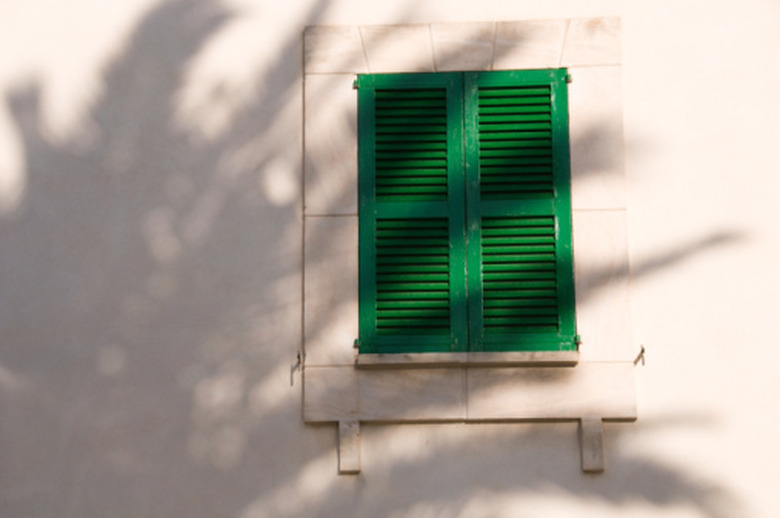How To Apply Stucco Over A Painted Surface
Things Needed
-
Protective goggles
-
Gloves
-
Sander
-
Sandpaper
-
Broom
-
Paint tray
-
Paint roller
-
Stucco powder
-
Stucco sprayer
-
Bucket
-
Electric drill paint mixer
Tip
Stucco powder is available in colors that reflect on the surface after the material dries. Stucco may also be painted after the final coat fully dries.
Warning
Do not attempt to smooth out any surfaces; the rough surface left over after sanding facilitates adhesion.
Stucco is a plaster comprised of water and cement that provides an alternative to painted exteriors. Concrete bonding agents are necessary for the stucco to stick to the surface, otherwise the plaster will chip or flake off of the surface. Painted surfaces are not conducive to this process because they repel water in a manner that inhibits the stucco from bonding to the surface. There are tools and techniques that provide a means for overcoming this issue, however.
Step 1
Put on protective goggles and gloves to prevent paint chips from getting in your eyes or lacerating your skin.
Step 2
Attach the sandpaper to the sander in accordance to the specifications provided by the manufacturer of the sander. This process varies based on the brand. Use medium-grade sandpaper to remove paint from wooden surfaces, and coarse sandpaper to remove paint from concrete or brick surfaces. Brush away residual dust and paint chips from the wall with a broom. If the surface is concrete or brick, the excess residue may be hosed off; however, the surface must fully dry before proceeding to the next step. Do not use water on wood or drywall surfaces; water may cause the surface to decay or lead to mold.
Step 3
Pour bonding agent into the paint tray. Dip the paint roller into the paint tray and apply the bonding agent evenly over the wall. If stuccoing a wooden surface, attach waterproof roofing paper to the surface following the sanding but prior to the application of the bonding agent. This step prevents moisture from causing the underlying wood to mold. Wait seven days to ensure that the surface is completely dry. Heavy rain may cause the bonding agent to drip and therefore require reapplication; drape the surface with a heavy-duty plastic tarp if this may be an issue.
Step 4
Pour dry stucco powder into the bucket and add water. Mix the water and powder for 15 minutes using the electric drill paint mixer. Typically, one 90-pound bag of powder combined with enough water to create a thick, viscous consistency covers 12 to 15 square yards. The stucco compound must be used within one hour after completing this process.
Step 5
Pour the stucco compound into the reservoir of the stucco sprayer and apply the stucco evenly over the surface. Most wooden surfaces require three layers of stucco to achieve appropriate thickness and texture; concrete and brick surfaces usually only require two layers. Apply the second coat two days after the first coat is applied; wait seven days after the second coat is applied to apply the third coat, if three coats are required. The final layer dries within five days.
